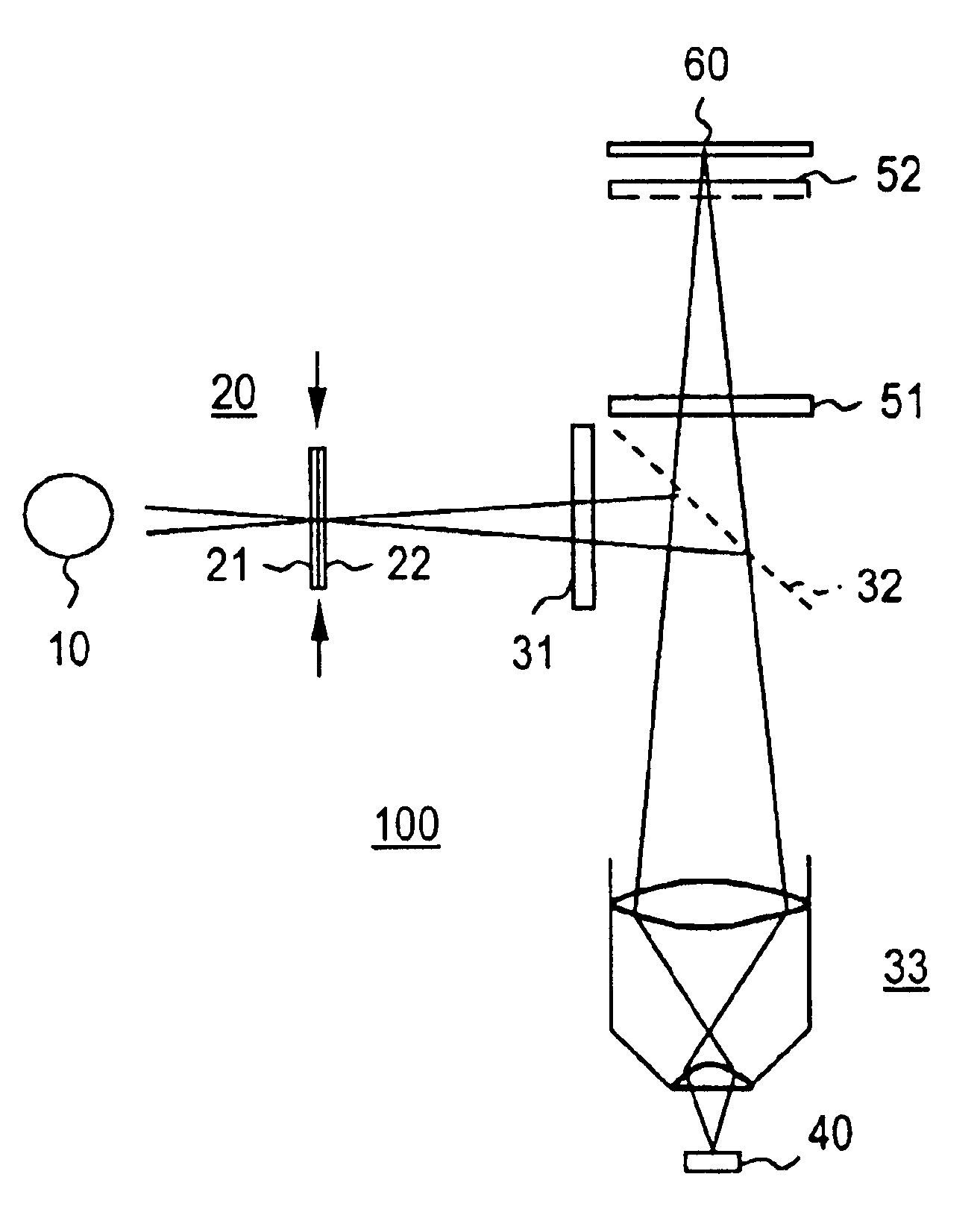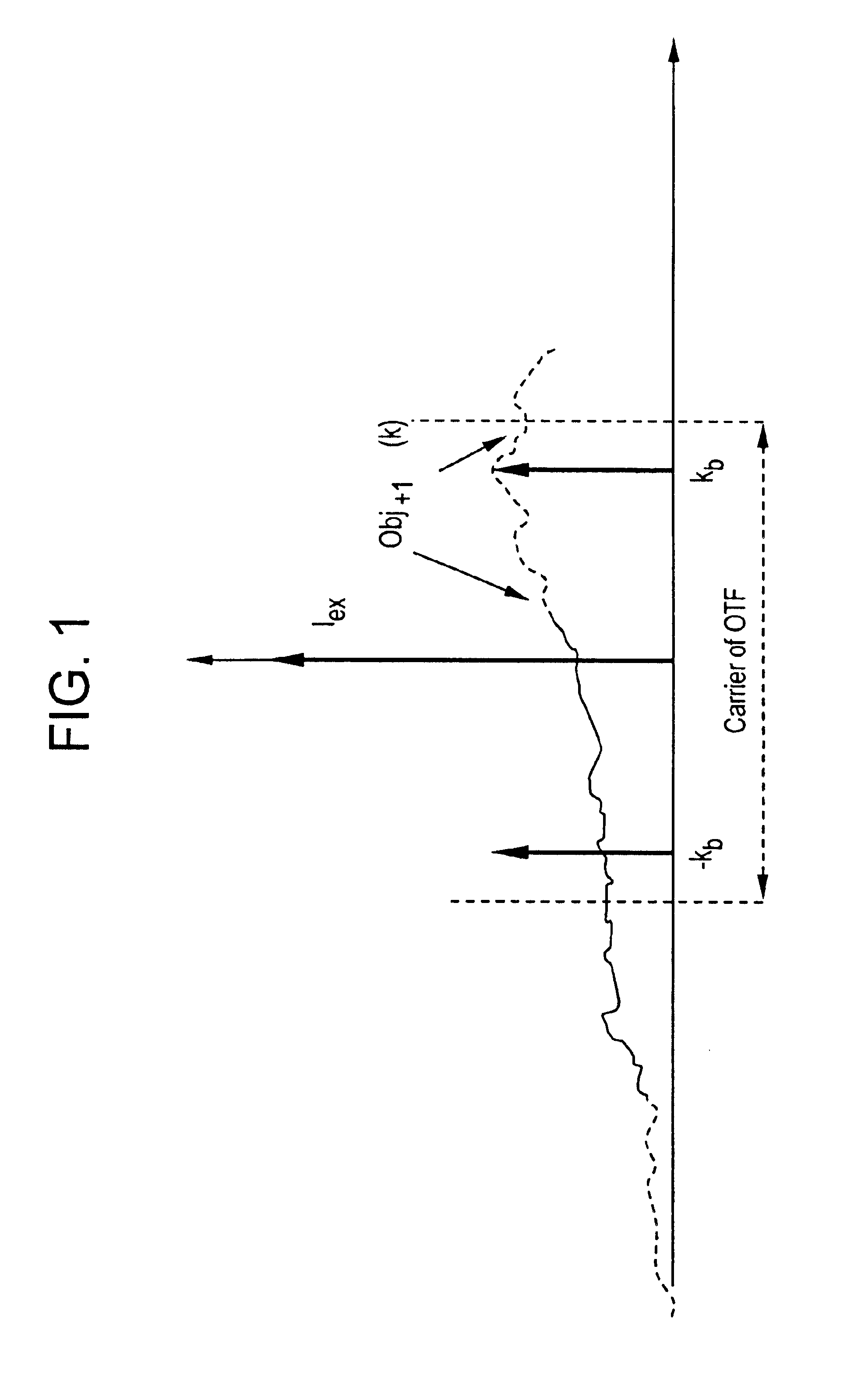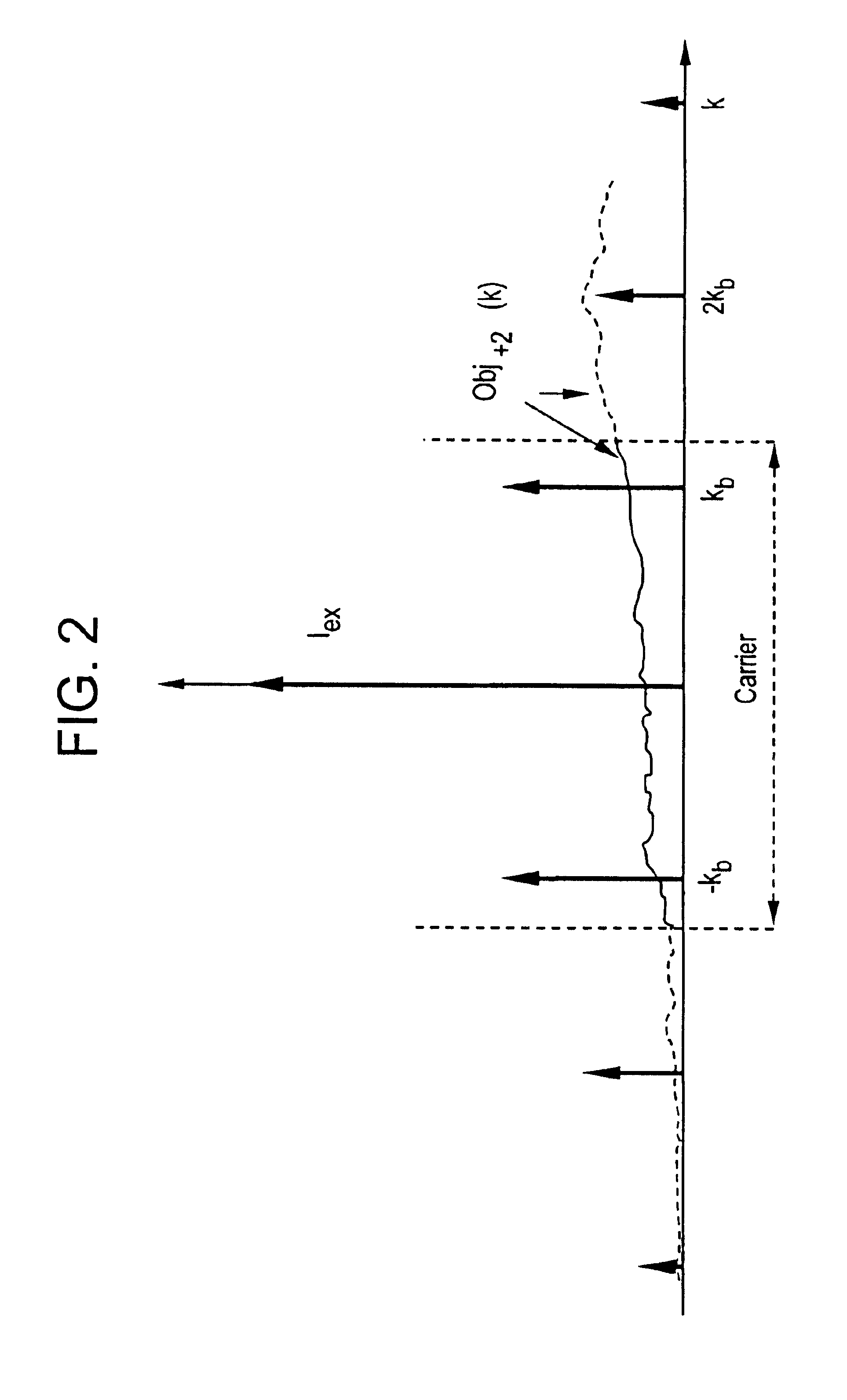Method and device for representing an object
a technology of object representation and object image, applied in the field of object imaging process, can solve the problems of otf region in the axial direction, difficult process realization, and special adjustment difficulty
- Summary
- Abstract
- Description
- Claims
- Application Information
AI Technical Summary
Benefits of technology
Problems solved by technology
Method used
Image
Examples
Embodiment Construction
[0033]The invention is first described in the following with reference to the theoretical foundations and then explained with reference to various examples. The invention is not restricted to the exemplary embodiments given. Altered embodiments under correspondingly varied object conditions can be realized depending on the application, particularly within the framework of the following statement of the concept.
[0034]The object or sections of the object to be detected during optical imaging are generally referred to in the following as “object”. Objects are, in particular, all types of biological or synthetic samples which are examined with typical imaging processes and localized resolution analysis processes, particularly microscopy and spectroscopy processes. Applications result, for example, in biology, medicine, chemistry, semiconductor technology, single molecule spectroscopy, and similar fields. The object can be solid, liquid, or gaseous.
[0035]“Object conditions” are generally...
PUM
 Login to View More
Login to View More Abstract
Description
Claims
Application Information
 Login to View More
Login to View More - R&D
- Intellectual Property
- Life Sciences
- Materials
- Tech Scout
- Unparalleled Data Quality
- Higher Quality Content
- 60% Fewer Hallucinations
Browse by: Latest US Patents, China's latest patents, Technical Efficacy Thesaurus, Application Domain, Technology Topic, Popular Technical Reports.
© 2025 PatSnap. All rights reserved.Legal|Privacy policy|Modern Slavery Act Transparency Statement|Sitemap|About US| Contact US: help@patsnap.com



